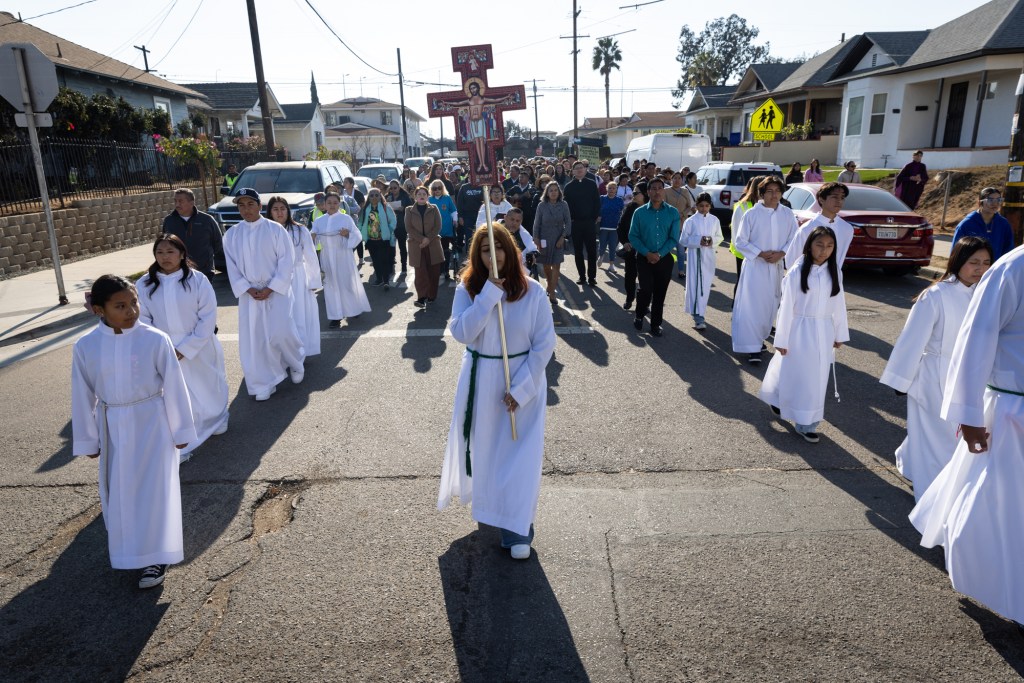Prominently displayed in the parade that meandered through Logan Heights, Our Lady of Guadalupe parishioners carried dual signs in both English and Spanish featuring the parish’s motto, “We Belong.”
However, on Sunday, the message adopted a more expansive interpretation, stated Father Scott Santarosa, the pastor of the parish.
“We don’t merely belong to this parish,” he remarked. “We belong to the community and to this nation.”
Our Lady of Guadalupe, a Jesuit parish catering to a significant Mexican and Latino population, conducted a walking procession in support of the immigrant community just prior to President Donald Trump’s inauguration. Trump has pledged to enforce widespread deportations of undocumented immigrants.
Such promises from Mr. Trump have instilled fear and unease among several parish members, concerning their families, friends, communities, or themselves.
“I worry about families who have undocumented individuals,” Santarosa expressed in an interview. “Listen and empathize.”
Throughout the two-hour march, church attendees prayed and sang spiritual hymns. Others voiced their anxieties through personal stories.
A woman from Mexico, who identified herself simply as Laura, recounted how her faith has accompanied her during her 30 years in the United States. “I don’t want my children to be afraid,” she states. “This is why I advise them that even during fearful times, we need to be braver and pray to God.”


Others participated in the procession to convey to the immigrant community that “they are not alone.”
“We form a tight-knit community and our parish is perpetually here to uplift them,” stated Gabriel Contreras, a resident of Logan Heights and a member of the nonprofit San Diego Organizing Project.
Imperial Beach Mayor Paloma Aguirre, Chula Vista City Council Member Carolina Chavez, San Diego City Council Member Vivian Moreno, and San Diego Democratic Congressman Juan Vargas were also present.


“You have heard the narrative. People are frightened about what may happen to themselves and their children,” said Vargas, who does not plan to attend Monday’s inauguration.
Our Lady of Guadalupe Parish also accommodates asylum seekers. In October 2023, the diocese initiated a temporary shelter primarily for single immigrant men lacking alternative options, while other facilities were designated for women and families. Nonetheless, the shelter has since adapted to house some families.


Luisvich Ibarra, an asylum seeker from Venezuela, has been residing at the shelter since last month. Upon arrival, he checked in at the port of entry through the mobile app reservation system of U.S. Customs and Border Protection.
He expressed concerns for both himself and other asylum seekers who are still awaiting appointments in Mexico. President Trump and other anticipated officials within his administration have reiterated plans to discontinue the CBP One process.
Tom Homan, Trump’s candidate for border czar, mentioned in an interview with Fox News that immigration officials focus on public safety threats but emphasized that “no one is off the table.”
“If they enter the nation illegally, there will be complications,” he stated.
CNN reports that President Trump intends to sign over 100 executive orders on his first day in office, encompassing matters related to border security and immigration.

